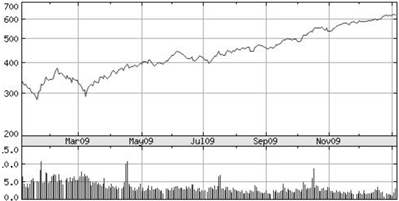Contracts For Difference have some unique risks associated with them, as well as some general dangers common to many investment types. Understanding where the pot-holes lie will give you, the investment vehicle driver, the ability to steer clear of many potentially dangerous situations.
Risk #1: Too Many CFD Options
CFD’s are available on a variety of products, including precious metals, currency, and international business. While it might seem lucrative to jump into another countries economy and start trading, you should first ask yourself, ‘what exactly do I know about their economic climate? Am I trading on emotion or accurate knowledge?’
Do not be lured into trading an exotic CFD you are unfamiliar with just because it is new and exciting.
Risk #2: No Strategy
Because of the nature of CFD’s, many people trade them under a very short term window. This makes it increasingly difficult to forecast movements with precision. But this does not mean that trading CFD’s does not require a strategy… it does! Without a proper game plan, the investor could quickly fall prey to over-trading.
Overtrading can occur when you let your emotions rule you. You see a trade and want in on the action right now! Shortly thereafter you regret your decision, especially when the trade begins to go against you. With no other reason to stay in the trade, you exit at a loss. Many professional traders with large bankrolls make their living from manipulating emotional traders who make transactions based on gut-feelings without strategy.
Not having a strategy can lead to trading to fill boredom, an addiction, or to get revenge on a trade that lost you money.
Risk #3: Trading Against the Trend
Many investors attempt to profit from continually purchasing a falling stock in the hopes it will rise. Or they may short stock that is climbing upwards in anticipation of a drop. This risky practice can be particularly dangerous with CFD’s. Why?
A trader employing this practice with equity shares might be willing to lose 30 or 40 percent of his investment with this highly speculative, momentum style trading. But bucking the trend with CFD’s could be costly indeed. Instead of a 30 percent loss, the trader could be looking at a 600 percent loss! The highly leveraged trade is precarious at best without the need for trend bucking.

Should we trade against this stock just because it is going up? How many traders would have lost money trying that over the past year?
Risk #4: Trading Too Large of a Position
Because of the highly leveraged and highly speculative nature of CFD’s, we should never invest more than we are willing to lose. Also, we should be judicious when allocating funds for each trade. We do not want to put all our ‘eggs in one basket’ by getting cocky with our trades…pun intended.
Why might some traders start out with reasonable amount per trade, and quickly escalate the capital invested beyond sensible risk management?
- A winning trade
New traders might experiment with different strategies with CFD’s. They will often have a winning trade and become exuberant. Feeling that this strategy is fool-proof and allowing greed to take over, they allocate far more capital into the next trade then good sense would normally allow. Because CFD’s can be unpredictable at the best of times, their position may be wiped out.
- Trading to get revenge
When a trade doesn’t go our way, it is natural to feel a little annoyed. But some take it a step further and feel that it is a personal attack on their esteem and intelligence. To prove they are superior to the market and that their original analysis is correct, they come back with a vengeance and even more capital than the first time to win back all of their losses.
Another danger of trading too large a position is using all available capital as initial margin without having the necessary capital to back it up with variation margin should the trade go slightly against us. There can be nothing more frustrating than getting a margin call, and you still believe in the CFD, but you are forced to close the position at a loss from a lack of funding.
The market isn’t personal, and it doesn’t care about our feelings. We should never take a loss personal. Profits and losses is just the nature of investing.
Risk #5: Not Having an Stop-Losses
It can be very annoying to be right about the direction of a CFD and still lose money. This can happen when we have an automated stop-loss. The stock is whip-sawed intra-day which forces us to close out our position. Following that, the asset and the CFD value rises.
Some will remove stop-losses altogether to prevent this from happening again. This may mean switching account types with our CFD provider to a trader style account that doesn’t require stop-losses. But this also greatly increases our risk.
Without stop-losses, large capital can be lost when the stock moves drastically intra-day but we are not available to exit the trade. Also, not having a stop-loss may allow the trader too much time to talk himself out of closing a losing position. He may incur increasingly large losses since he neglected a stop-loss strategy.
Risk #6: No Rights
Simply put, you have no rights with a CFD contract that the share holder would normally have. You cannot vote. For many, this does not matter, but for some it is a perceived risk.
Risk #7: Long Term Trading
If you are a long-term trader, CFD’s might be too risky to be a suitable investment for you. Consider what may happen to a buy and hold investor:
He purchases a heavily margined CFD contract and hold it throughout the year. The leverage may well force such a long term investor out of his position. Also, the overnight financing fees will add up and work against his profitability.